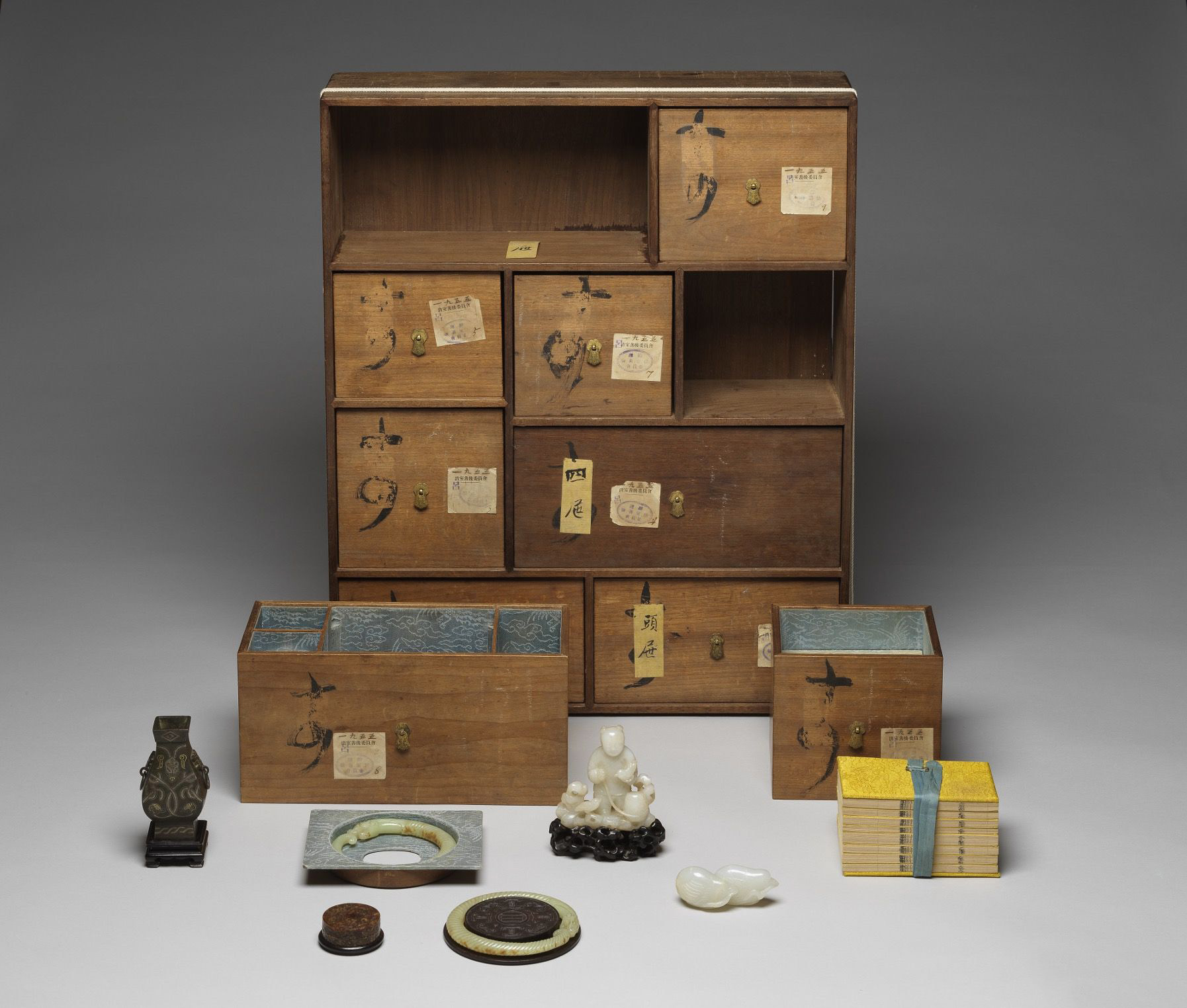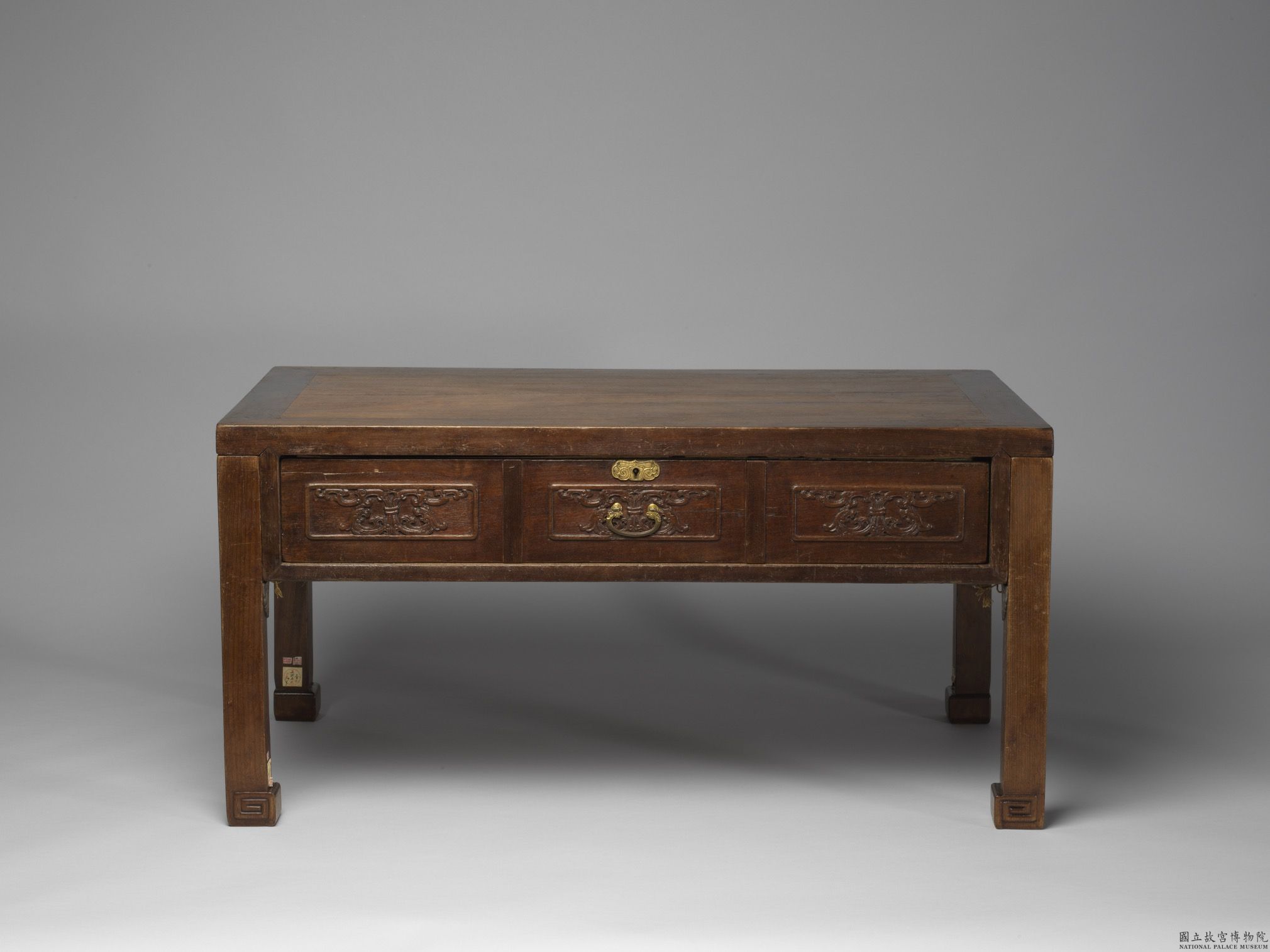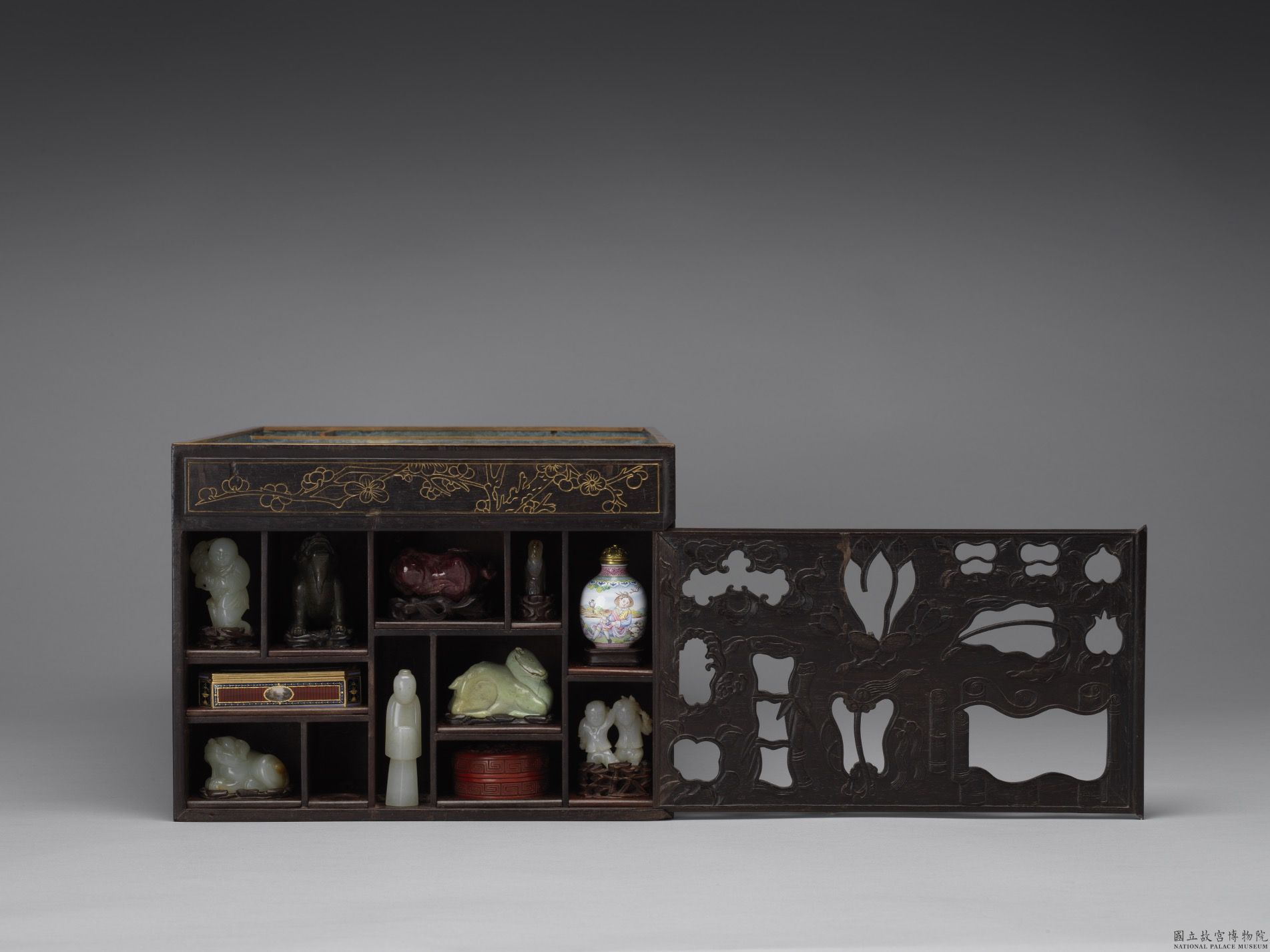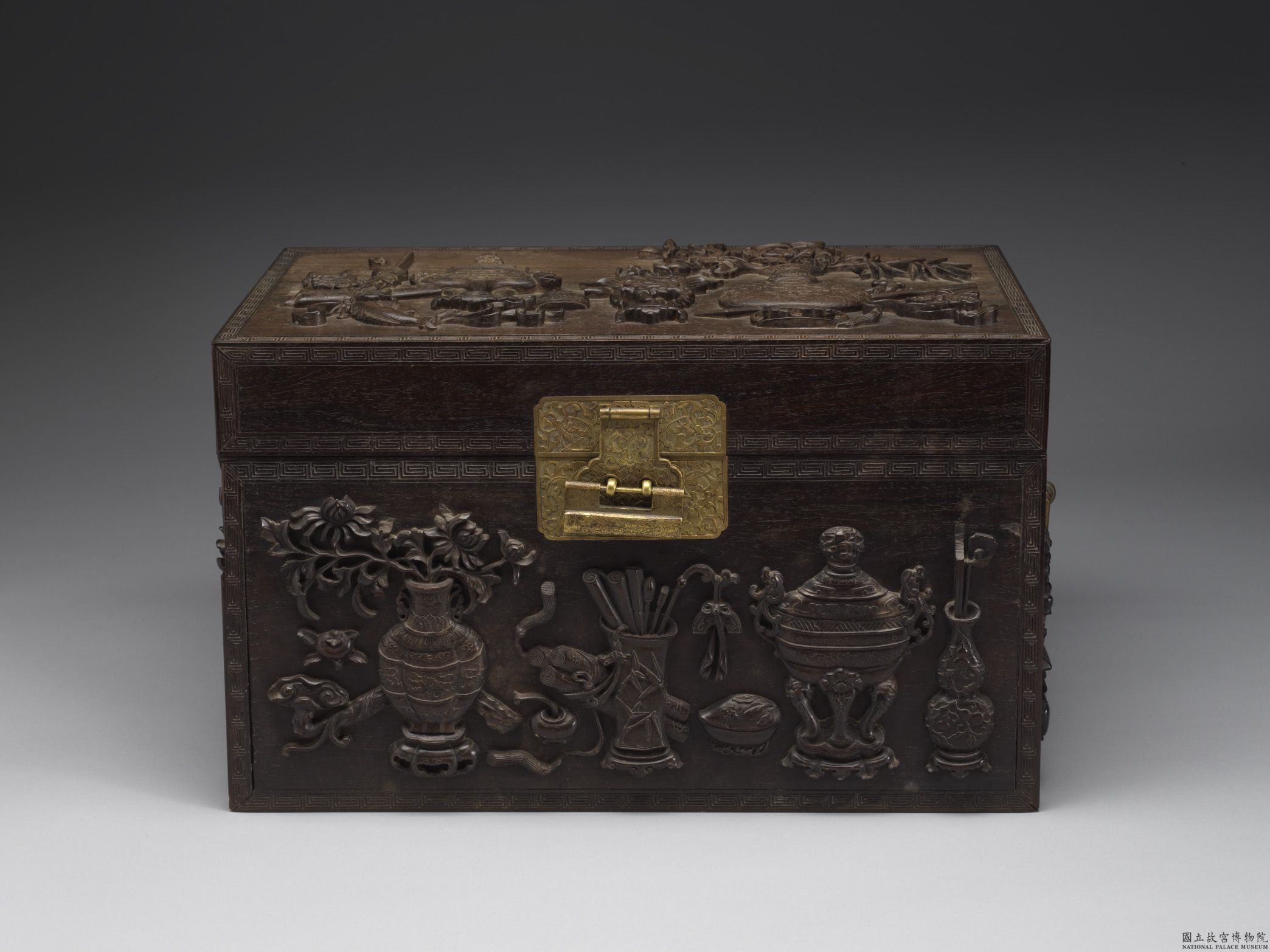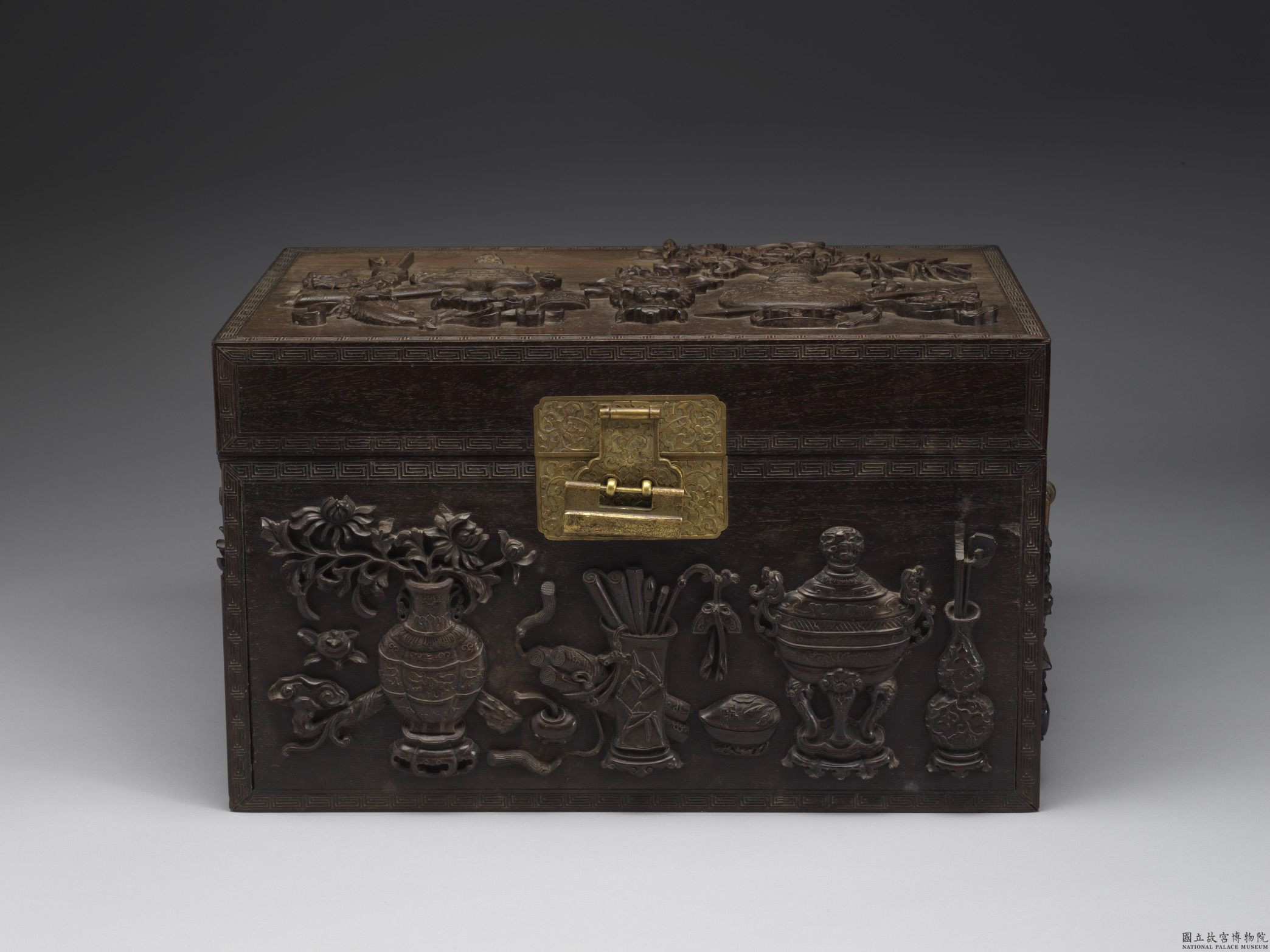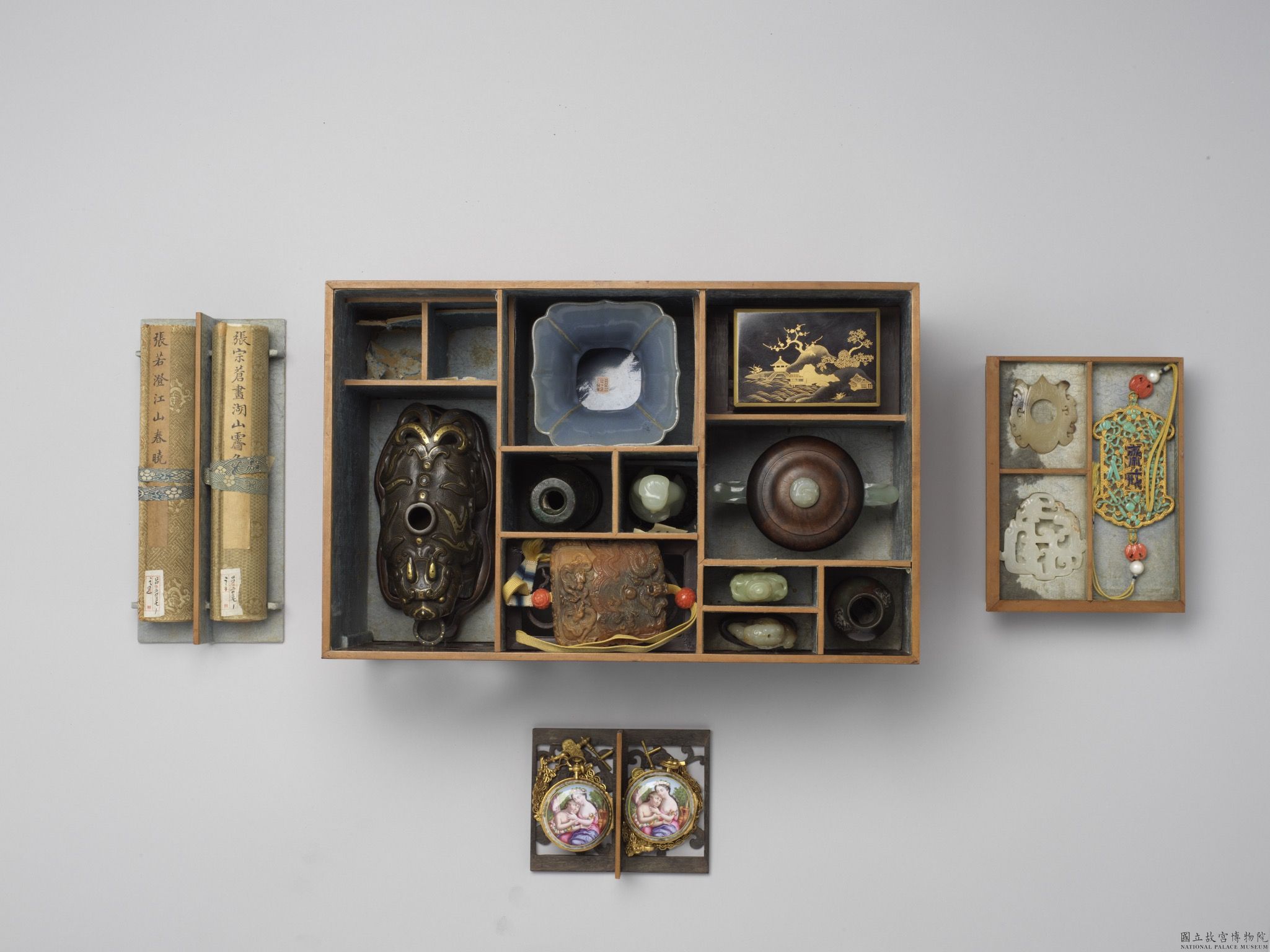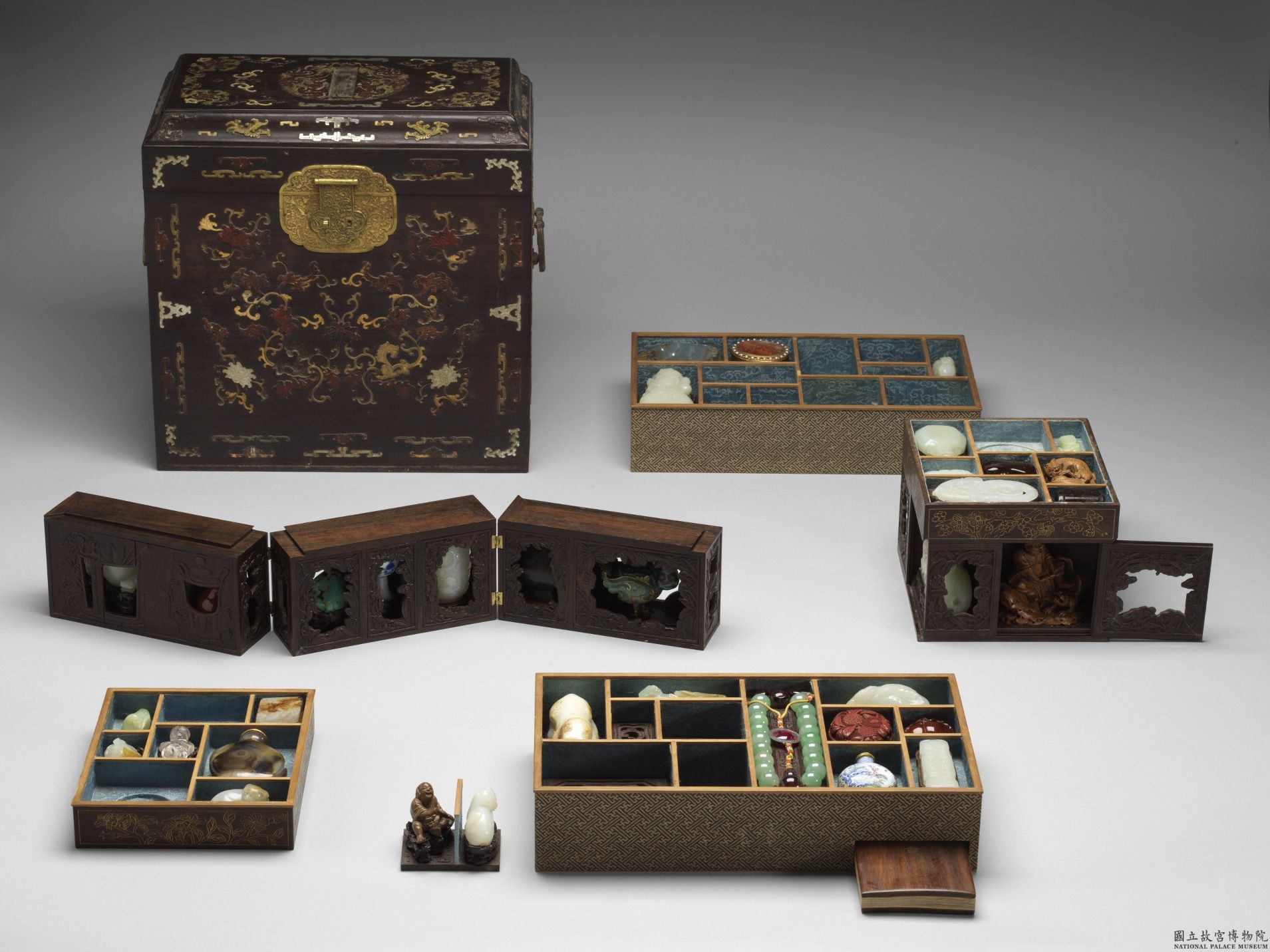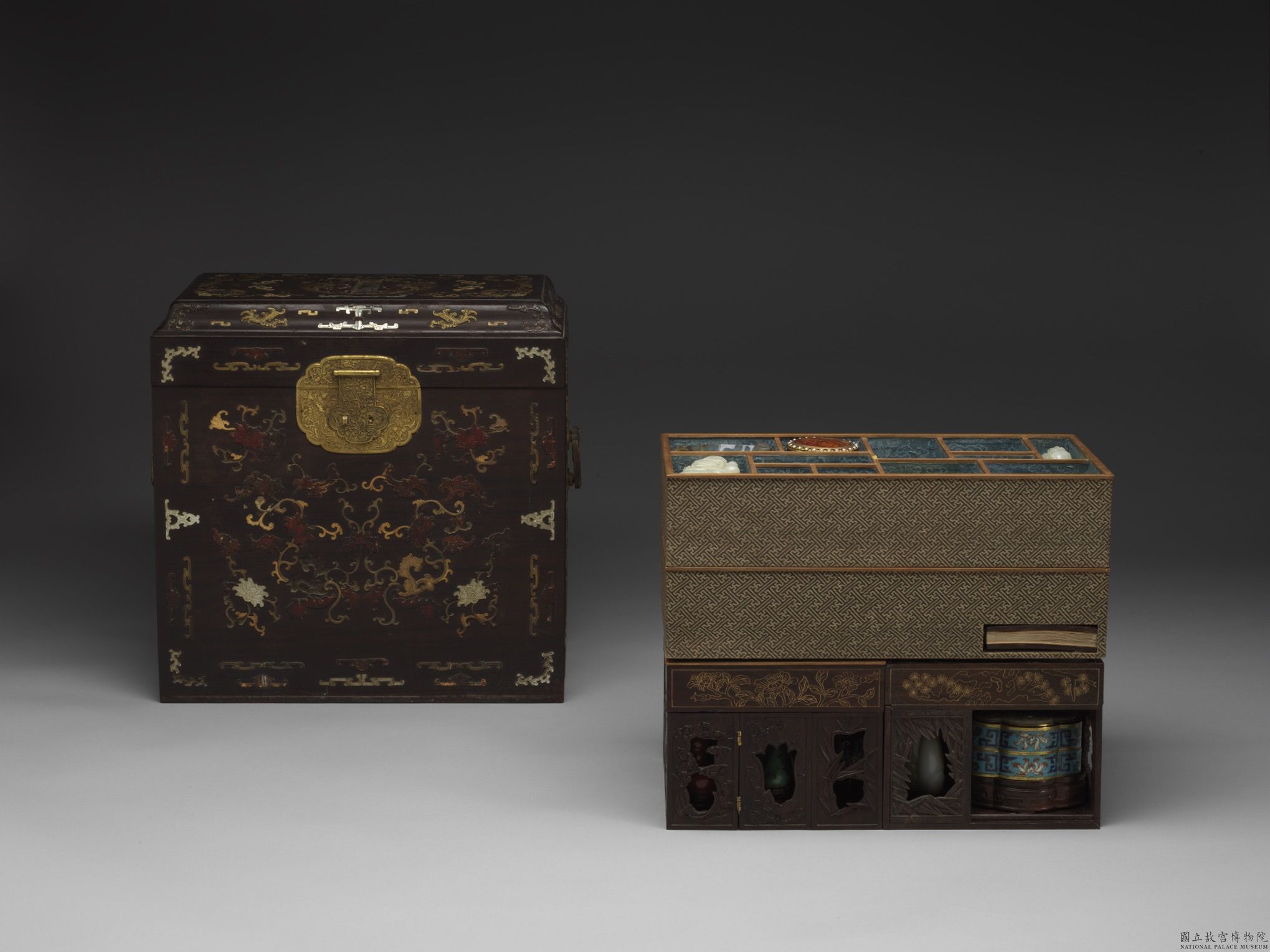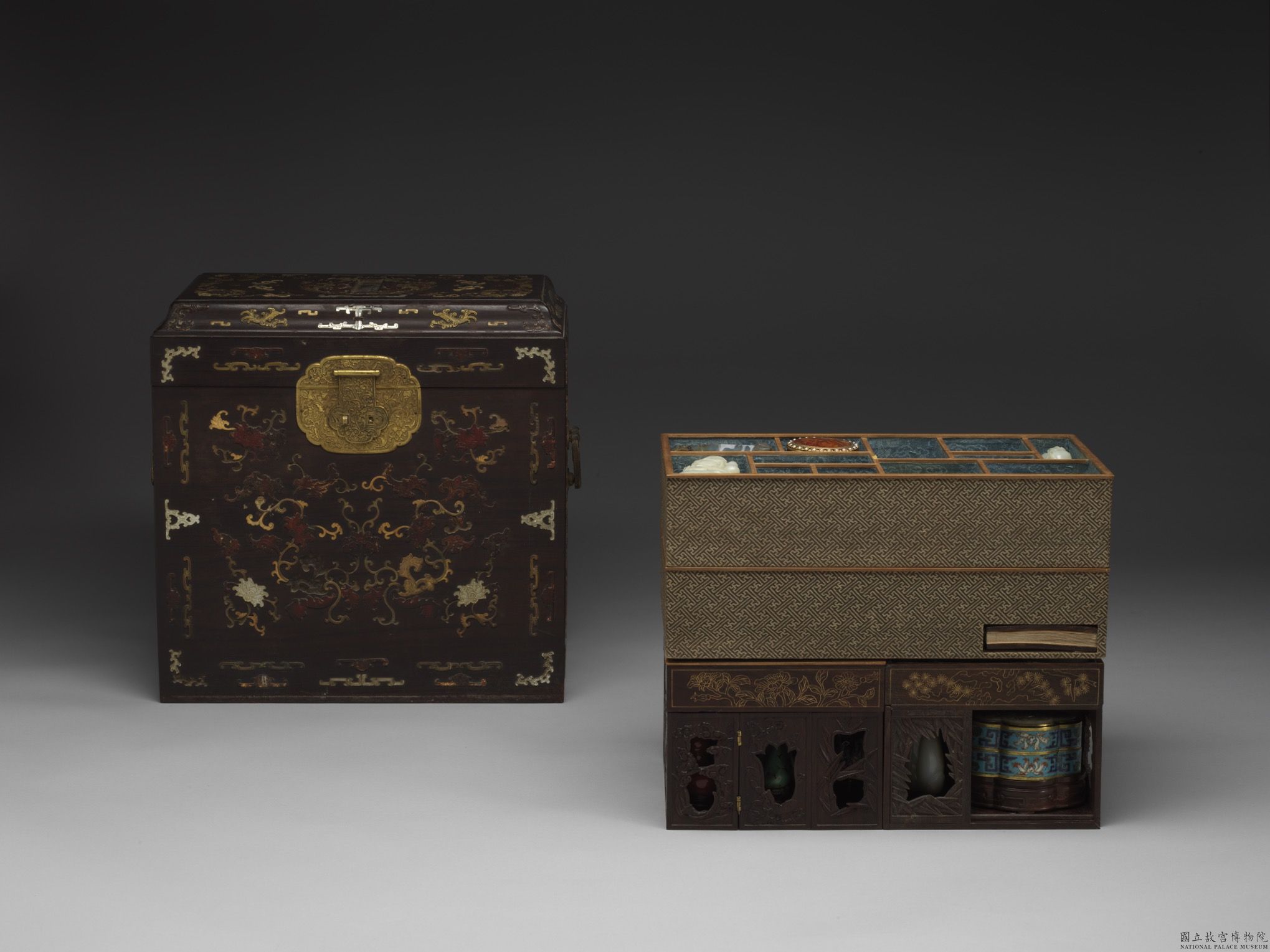Storing
This section showcases five baishijian curio boxes of different types to underline the ingenious approaches to "storing." Using dividers, drawers, and hidden drawers, craftsmen of earlier times were able to create many compartments to accommodate the largest number of miniature curios in the limited space available. This section emphasizes the function and concept of storage through different types of baishijian and their historical context and lets visitors transcend time and space to experience the joy of treasure hunting with their earlier collectors.
Wood cabinet with nine drawers
- Qing dynasty
- Qianlong reign (1736-1795)
According to the documents in the Archives of Imperial Workshop from the 11th year of the Qianlong reign (1746), there was a pair of large shelves in the Dongnuange (Eastern Warmth Chamber) in the Yangxindian (Hall of Mental Cultivation). The Qianlong emperor requested that, in addition to the shelves for displaying art objects, drawers were to be affixed to cabinets of thinner curios in the back and the curios stored in the baishijian style. A perusal of the display archives of the succeeding Jiaqing reign reveals that the jade tablet with wooden base was placed on the shelf at the south side of the Dongnuange. Since the jade tablet is rather thin, the nine-drawer wooden curio box on view here was set behind the shelves.
A total of sixty curio pieces are present in the nine-drawer wooden box. All drawers are made of wood, and the inner space is occupied by different types of drawers. For example, there are small drawers and drawers hidden in drawers, and the small drawers are divided into many compartments. The drawers are arranged horizontally or vertically, and the space is further separated into several thinner layers. Set to store curios of various shapes, the mixed use of the drawers is a fine example of the effective utilization of available space.
Table-formed curio box (argarwood portable folding curio table)
- Qing dynasty
- Qianlong reign (1736-1795)
The Qianlong emperor, who liked to travel, was particular about the desks used for such occasions. The documents of the Archives of Imperial Workshop from the 6th year of the Qianlong reign (1741) showed that he ordered the production of a portable phoebe folding desk. The legs can be removed and put into the large drawer of the desk. The large drawer is constructed in the form of a baishijian curio cabinet. Not only stationery like brushes, inksticks, paper, ink-stones, and water containers are kept inside, but vases and other exquisite curios are also properly stored. It is not difficult to imagine that the desk would be promptly set up if the Emperor wanted to write or paint when traveling. The studio accessories would be neatly arranged, and the Emperor would then create freely and enjoyed the curios. The elegance in luxury is seen here. Home to desk legs, writing tools, and other curios, this large drawer is a self-sufficient small studio.
Sandalwood rectangular box with antiques design
- Qing dynasty
- Qianlong reign (1736-1795)
The outer box is made of red sandalwood and finely carved with images of a bogutu (painting of assorted antiquities). The inner drawer is also made of red sandalwood, and its upper edges are decorated with flowers of the four seasons in bas-relief and filled with gold. The long sideboards are carved with the auspicious bas-relief of deer and cranes, meaning Luhe Tongchun (deer and cranes welcoming the coming of spring). The short sideboards are movable and carved with windows in the shape of gourds, bats, fangsheng , plantains, and other auspicious designs, through which miniature curios of various materials and shapes are visible. Sliding open the sideboard, the inner space is filled with small compartments. The bottom board of the compartment can be pulled out, and each curio is fitted with a wooden base attached perfectly to the bottom board. This is not just a regular baishijian curio box. The sophisticated requirements for both storage and display have all been cleverly attended to, and the added display feature is realized with the layering of interior spaces.
Red sandlewood cabinet inlaid with porcelain panels of antiquities
- Qing dynasty
- Qianlong reign (1736-1795)
Typically made of red sandalwood, this type of cabinet with porcelain panels is a miniature of the two-tier cabinet from historical China. Colorful porcelain panels with images of a bogutu decorate the front boards, and the frames are inlaid with silver wires. Both upper and lower cabinets have album leaves with jade bi discs and wooden drawers. The drawers are made of red sandalwood and carved with windows of auspicious designs. A miscellaneous assortment of curios like carved rhinoceros horns, carvings, bronzes, porcelains, jades, calligraphic works, paintings, Japanese lacquer boxes, and Western pocket watches are stored inside. Drawers and hidden drawers are used alternately to create storage space, and different bases attached to different curios. The holdings exemplify the richness of a baishijian curio cabinet.
While the repository of the baishijian curios may appear as different types of furniture and cabinets, their interior space design has one element in common, the application of the baishijian approach to storing curios.
Red sandalwood curio box decorated with gem inlay
- Qing dynasty
- Qianlong reign (1736-1795)
Though very much similar in design, the decorative patterns on the outer box are inlaid with multiple materials like mother of pearl, amber, and ivory. The original inscription on top of the box is missing. Opening the red sandalwood box, one can see two trays of baishijian drawers. Each tray is divided into smaller compartments, and curios of different materials are stored inside. Under these two wooden trays, the space is divided into two cubes. One cube has an upper tray and a lower box with four compartments. The side panels of the box are carved with windows. One can slide out the side panels and take out the curios. The other cube has an upper tray, and the lower part is made up of several rectangular grids hinged like a train. There are seven pieces of curios of different materials inside. The windows are cleverly attached with small mortise and tenon joints.


